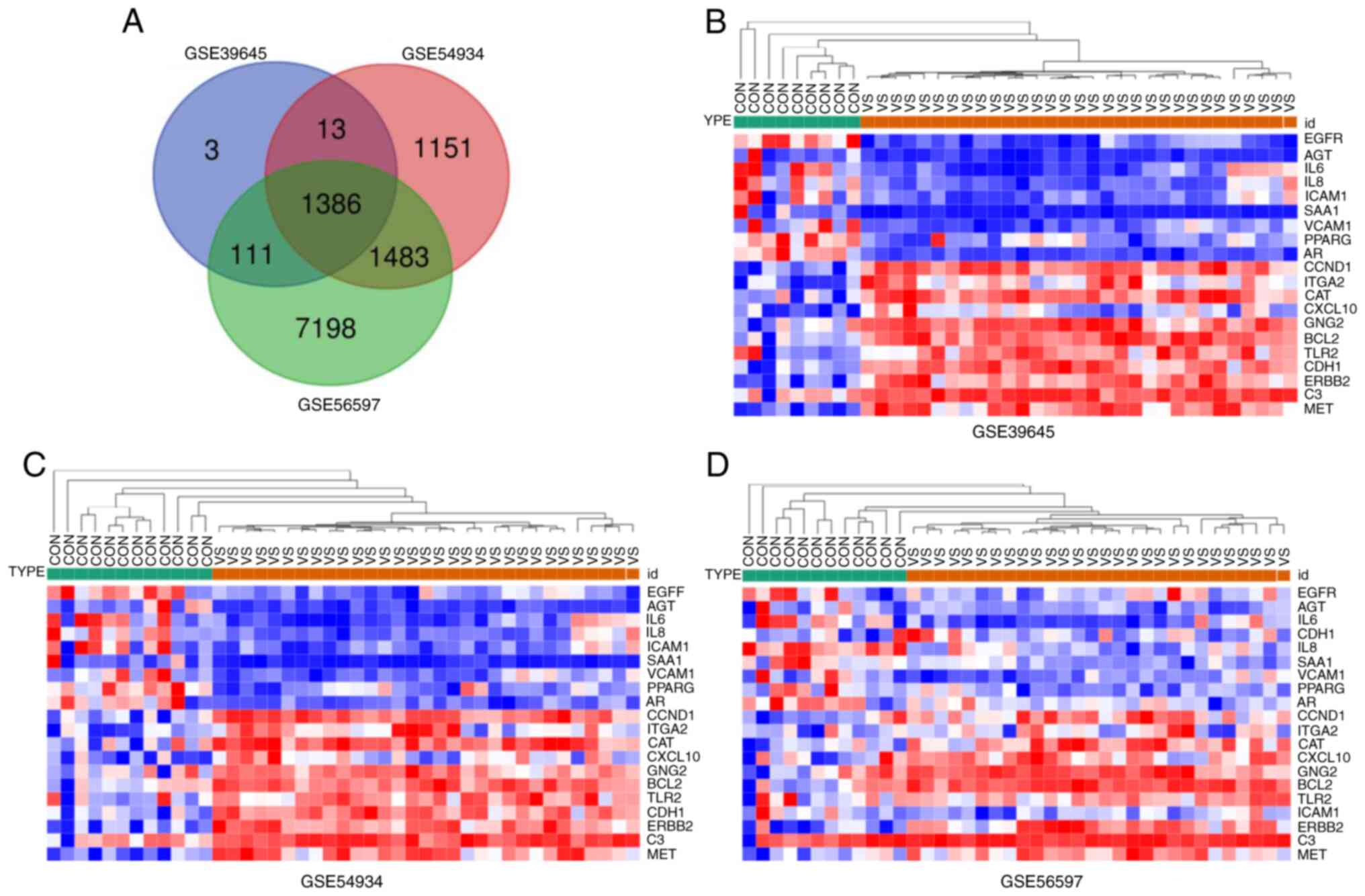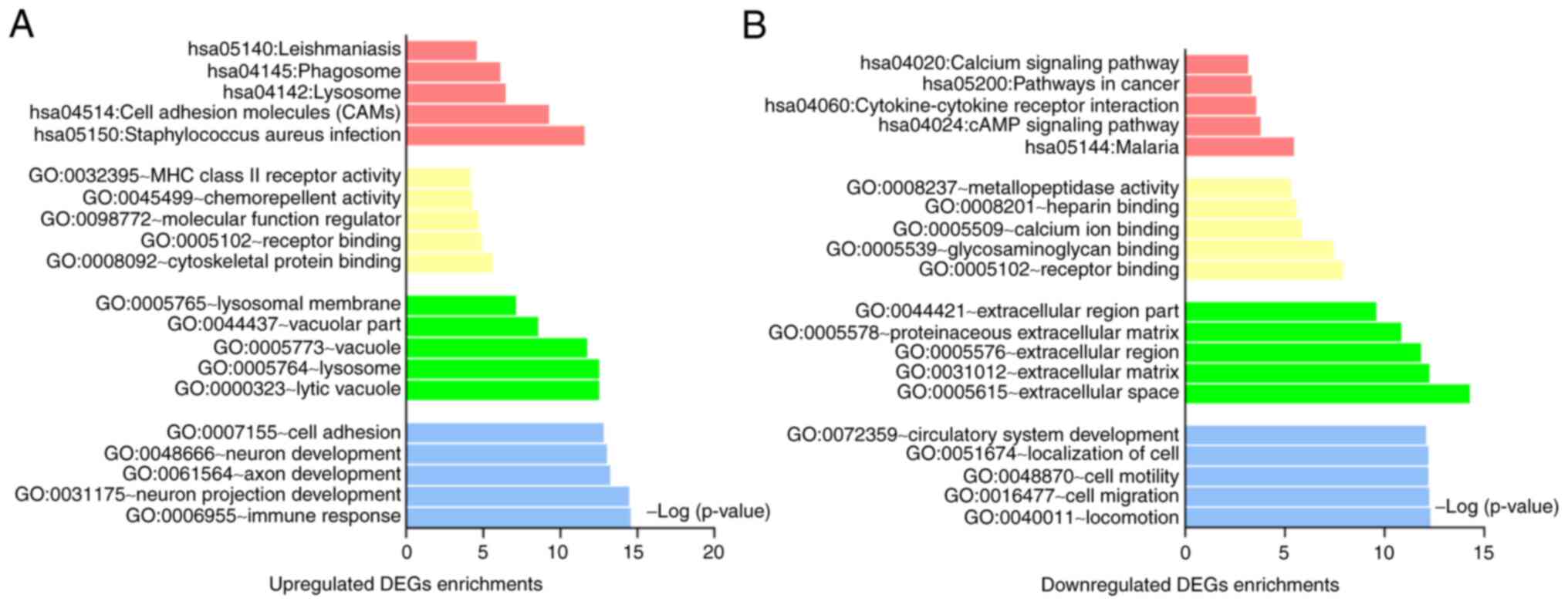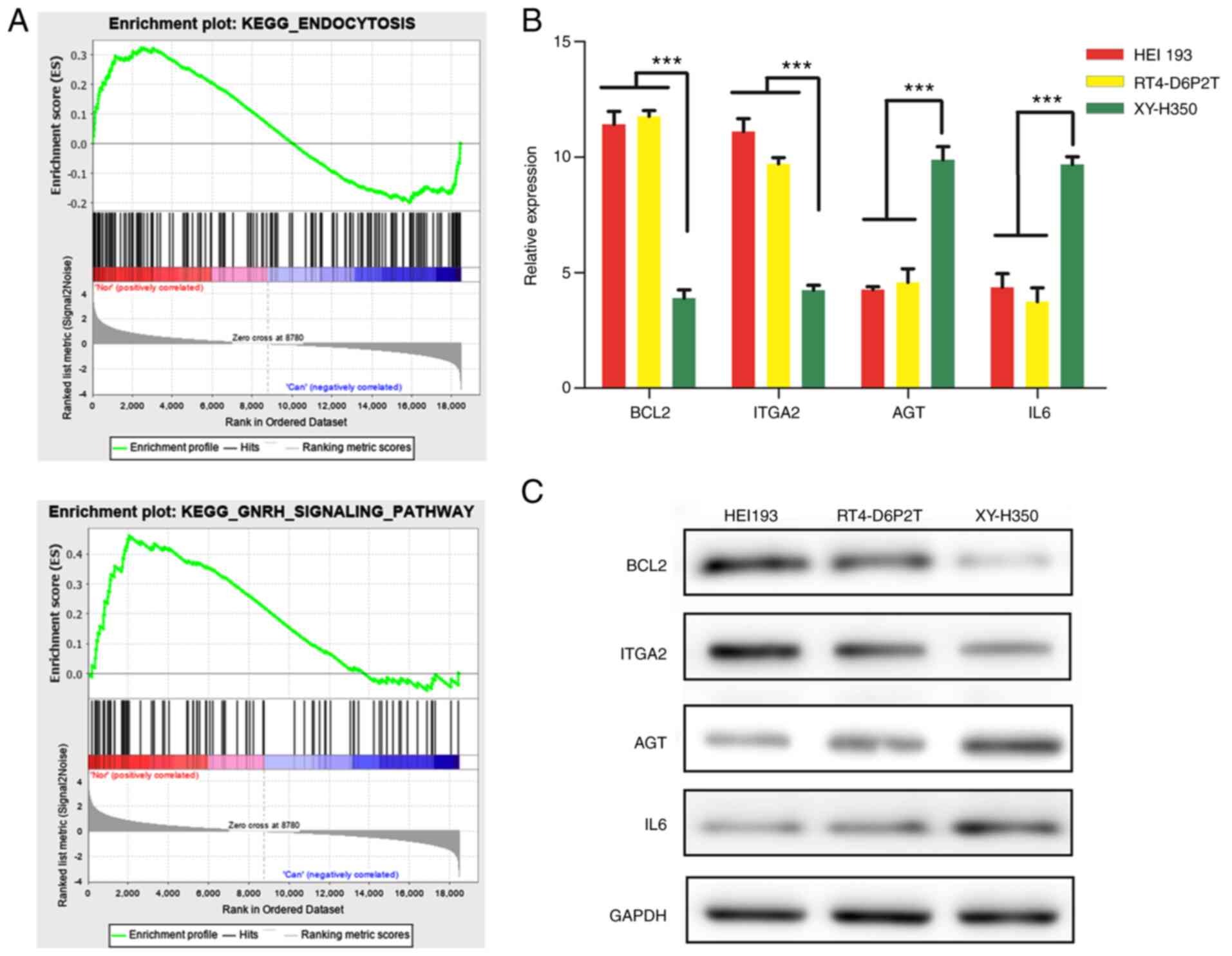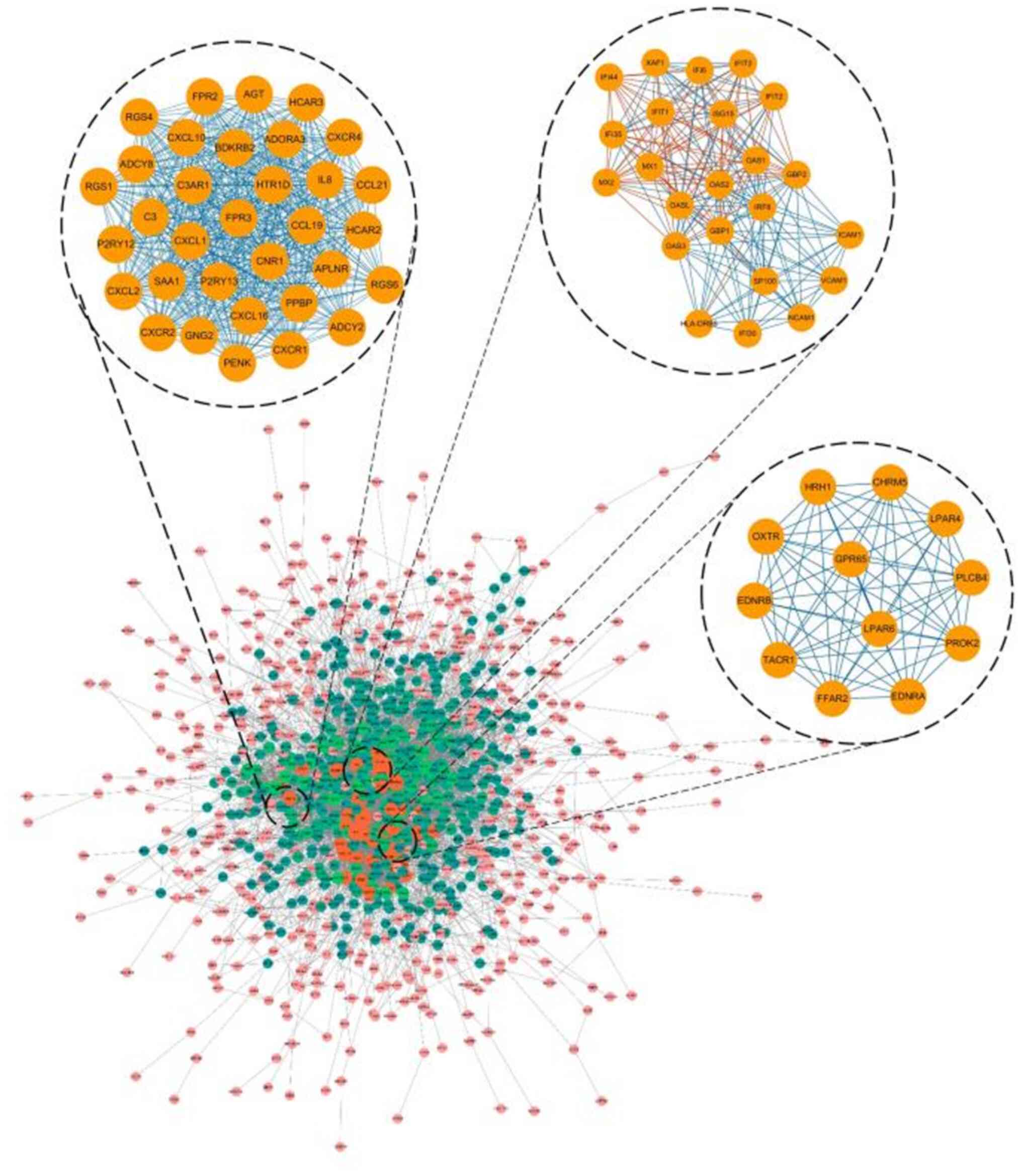|
1
|
Ramaswamy AT and Golub JS: Management of
vestibular schwannomas for the radiologist. Neuroimaging Clin N Am.
29:173–182. 2019.PubMed/NCBI View Article : Google Scholar
|
|
2
|
Mahaley MS Jr, Mettlin C, Natarajan N,
Laws ER Jr and Peace BB: Analysis of patterns of care of brain
tumor patients in the United States: A study of the brain tumor
section of the AANS and the CNS and the commission on cancer of the
ACS. Clin Neurosurg. 36:347–352. 1990.PubMed/NCBI
|
|
3
|
Basu S, Youngs R and Mitchell-Innes A:
Screening for vestibular schwannoma in the context of an ageing
population. J Laryngol Otol. 133:640–649. 2019.PubMed/NCBI View Article : Google Scholar
|
|
4
|
Kaul V and Cosetti MK: Management of
vestibular schwannoma (Including NF2): Facial nerve considerations.
Otolaryng Clin North Am. 51:1193–1212. 2018.PubMed/NCBI View Article : Google Scholar
|
|
5
|
Martini A, Marioni G, Zanoletti E,
Cappellesso R, Stramare R, Fasanaro E, Faccioli C, Giacomelli L,
Denaro L, D'Avella D, et al: YAP, TAZ and AREG expression in eighth
cranial nerve schwannoma. Int J Biol Markers. 32:e319–e324.
2017.PubMed/NCBI View Article : Google Scholar
|
|
6
|
Zhang Z, Wang Z, Sun L, Li X, Huang Q,
Yang T and Wu H: Mutation spectrum and differential gene expression
in cystic and solid vestibular schwannoma. Genet Med. 16:264–270.
2014.PubMed/NCBI View Article : Google Scholar
|
|
7
|
Torres-Martin M, Lassaletta L, Isla A, De
Campos JM, Pinto GR, Burbano RR, Castresana JS, Melendez B and Rey
JA: Global expression profile in low grade meningiomas and
schwannomas shows upregulation of PDGFD, CDH1 and SLIT2 compared to
their healthy tissue. Oncol Rep. 32:2327–2334. 2014.PubMed/NCBI View Article : Google Scholar
|
|
8
|
Torres-Martin M, Lassaletta L,
San-Roman-Montero J, De Campos JM, Isla A, Gavilan J, Melendez B,
Pinto GR, Burbano RR, Castresana JS and Rey JA: Microarray analysis
of gene expression in vestibular schwannomas reveals SPP1/MET
signaling pathway and androgen receptor deregulation. Int J Oncol.
42:848–862. 2013.PubMed/NCBI View Article : Google Scholar
|
|
9
|
Torres-Martín M, Lassaletta L, de Campos
JM, Isla A, Pinto GR, Burbano RR, Melendez B, Castresana JS and Rey
JA: Genome-wide methylation analysis in vestibular schwannomas
shows putative mechanisms of gene expression modulation and global
hypomethylation at the HOX gene cluster. Genes Chromosomes Cancer.
54:197–209. 2015.PubMed/NCBI View Article : Google Scholar
|
|
10
|
Shannon P, Markiel A, Ozier O, Baliga NS,
Wang JT, Ramage D, Amin N, Schwikowski B and Ideker T: Cytoscape: A
software environment for integrated models of biomolecular
interaction networks. Genome Res. 13:2498–2504. 2003.PubMed/NCBI View Article : Google Scholar
|
|
11
|
Otasek D, Morris JH, Bouças J, Pico AR and
Demchak B: Cytoscape automation: Empowering workflow-based network
analysis. Genome Biol. 20(185)2019.PubMed/NCBI View Article : Google Scholar
|
|
12
|
Leng J, Song Q, Zhao Y and Wang Z: miR-15a
represses cancer cell migration and invasion under conditions of
hypoxia by targeting and downregulating Bcl2 expression in human
osteosarcoma cells. Int J Oncol. 52:1095–1104. 2018.PubMed/NCBI View Article : Google Scholar
|
|
13
|
Mehrian-Shai R, Freedman S, Shams S,
Doherty J, Slattery W, Hsu NY, Reichardt JK, Andalibi A and Toren
A: Schwannomas exhibit distinct size-dependent gene-expression
patterns. Future Oncol. 11:1751–1758. 2015.PubMed/NCBI View Article : Google Scholar
|
|
14
|
Schulz A, Büttner R, Hagel C, Baader SL,
Kluwe L, Salamon J, Mautner VF, Mindos T, Parkinson DB, Gehlhausen
JR, et al: The importance of nerve microenvironment for schwannoma
development. Acta Neuropathol. 132:289–307. 2016.PubMed/NCBI View Article : Google Scholar
|
|
15
|
Roche PH, Figarella-Branger D, Daniel L,
Bianco N, Pellet W and Pellissier JF: Expression of cell adhesion
molecules in normal nerves, chronic axonal neuropathies and Schwann
cell tumors. J Neurol Sci. 151:127–133. 1997.PubMed/NCBI View Article : Google Scholar
|
|
16
|
Padmanaban V, Krol I, Suhail Y, Szczerba
BM, Aceto N, Bader JS and Ewald AJ: E-cadherin is required for
metastasis in multiple models of breast cancer. Nature.
573:439–444. 2019.PubMed/NCBI View Article : Google Scholar
|
|
17
|
Wen ZF, Liu H, Gao R, Zhou M, Ma J, Zhang
Y, Zhao J, Chen Y, Zhang T, Huang F, et al: Tumor cell-released
autophagosomes (TRAPs) promote immunosuppression through induction
of M2-like macrophages with increased expression of PD-L1. J
Immunother Cancer. 6(151)2018.PubMed/NCBI View Article : Google Scholar
|
|
18
|
Wang S, Liechty B, Patel S, Weber JS,
Hollmann TJ, Snuderl M and Karajannis MA: Programmed death ligand 1
expression and tumor infiltrating lymphocytes in neurofibromatosi
type 1 and 2 associated tumors. J Neurooncol. 138:183–190.
2018.PubMed/NCBI View Article : Google Scholar
|
|
19
|
Liang B, Li C and Zhao J: Identification
of key pathways and genes in colorectal cancer using bioinformatics
analysis. Med Oncol. 33(111)2016.PubMed/NCBI View Article : Google Scholar
|
|
20
|
Ni X, Ou C, Guo J, Liu B, Zhang J, Wu Z,
Li H and Chen M: Lentiviral vector-mediated co-overexpression of
VEGF and Bcl-2 improves mesenchymal stem cell survival and enhances
paracrine effects in vitro. Int J Mol Med. 40:418–426.
2017.PubMed/NCBI View Article : Google Scholar
|
|
21
|
Edison N, Curtz Y, Paland N, Mamriev D,
Chorubczyk N, Haviv-Reingewertz T, Kfir N, Morgenstern D,
Kupervaser M, Kagan J, et al: Degradation of Bcl-2 by XIAP and ARTS
promotes apoptosis. Cell Rep. 21:442–454. 2017.PubMed/NCBI View Article : Google Scholar
|
|
22
|
Ozretic P, Alvir I, Sarcevic B, Vujaskovic
Z, Rendic-Miocevic Z, Roguljic A and Beketic-Oreskovic L: Apoptosis
regulator Bcl-2 is an independent prognostic marker for worse
overall survival in triple-negative breast cancer patients. Int J
Biol Markers. 33:109–115. 2018.PubMed/NCBI View Article : Google Scholar
|
|
23
|
Yan F, Wang C, Li T, Cai W and Sun J: Role
of miR-21 in the growth and metastasis of human salivary adenoid
cystic carcinoma. Mol Med Rep. 17:4237–4244. 2018.PubMed/NCBI View Article : Google Scholar
|
|
24
|
Butler MJ and Aguiar RCT: Biology informs
treatment choices in diffuse large B cell lymphoma. Trends Cancer.
3:871–882. 2017.PubMed/NCBI View Article : Google Scholar
|
|
25
|
Feng L, Zhu J, Sun W, Zhao J and Liu Y:
Expressions of gastrin and apoptosis-associated proteins involved
in mitochondrial pathway in gastric cancer tissues and the clinical
significance. Xi Bao Yu Fen Zi Mian Yi Xue Za Zhi. 33:1557–1561.
2017.PubMed/NCBI(In Chinese).
|
|
26
|
You ML, Chen YJ, Chong QY, Wu MM, Pandey
V, Chen RM, Liu L, Ma L, Wu ZS, Zhu T and Lobie PE: Trefoil factor
3 mediation of oncogenicity and chemoresistance in hepatocellular
carcinoma is AKT-BCL-2 dependent. Oncotarget. 8:39323–39344.
2017.PubMed/NCBI View Article : Google Scholar
|
|
27
|
Liu F, Tong D, Li H, Liu M, Li J, Wang Z
and Cheng X: Bufalin enhances antitumor effect of paclitaxel on
cervical tumorigenesis via inhibiting the integrin α2/β5/FAK
signaling pathway. Oncotarget. 7:8896–8907. 2016.PubMed/NCBI View Article : Google Scholar
|
|
28
|
Sato Y, Kubo T, Morimoto K, Yanagihara K
and Seyama T: High mannose-binding Pseudomonas fluorescens lectin
(PFL) downregulates cell surface integrin/EGFR and induces
autophagy in gastric cancer cells. BMC Cancer.
16(63)2016.PubMed/NCBI View Article : Google Scholar
|
|
29
|
Wu SJ, Soulez M, Yang YH, Chu CS, Shih SC,
Hebert MJ, Kuo MC and Hsieh YJ: Local augmented angiotensinogen
secreted from apoptotic vascular endothelial cells is a vital
mediator of vascular remodelling. PLoS One.
10(e0132583)2015.PubMed/NCBI View Article : Google Scholar
|
|
30
|
Meinert C, Gembardt F, Bohme I, Tetzner A,
Wieland T, Greenberg B and Walther T: Identification of
intracellular proteins and signaling pathways in human endothelial
cells regulated by angiotensin-(1-7). J Proteomics. 130:129–139.
2016.PubMed/NCBI View Article : Google Scholar
|
|
31
|
Citron M, Decker R, Chen S, Schneider S,
Graver M, Kleynerman L, Kahn LB, White A, Schoenhaus M and Yarosh
D: O6-methylguanine-DNA methyltransferase in human normal and tumor
tissue from brain, lung, and ovary. Cancer Res. 51:4131–4134.
1991.PubMed/NCBI
|
|
32
|
Deckers IA, van den Brandt PA, van
Engeland M, van Schooten FJ, Godschalk RW, Keszei AP and Schouten
LJ: Polymorphisms in genes of the renin-angiotensin-aldosterone
system and renal cell cancer risk: Interplay with hypertension and
intakes of sodium, potassium and fluid. Int J Cancer.
136:1104–1116. 2015.PubMed/NCBI View Article : Google Scholar
|
|
33
|
Martin P, Noonan S, Mullen MP, Scaife C,
Tosetto M, Nolan B, Wynne K, Hyland J, Sheahan K, Elia G, et al:
Predicting response to vascular endothelial growth factor inhibitor
and chemotherapy in metastatic colorectal cancer. BMC Cancer.
14(887)2014.PubMed/NCBI View Article : Google Scholar
|
|
34
|
Deng G, Kakar S, Okudiara K, Choi E,
Sleisenger MH and Kim YS: Unique methylation pattern of oncostatin
m receptor gene in cancers of colorectum and other digestive
organs. Clin Cancer Res. 15:1519–1526. 2009.PubMed/NCBI View Article : Google Scholar
|
|
35
|
Sameni M, Cavallo-Medved D, Franco OE,
Chalasani A, Ji K, Aggarwal N, Anbalagan A, Chen X, Mattingly RR,
Hayward SW and Sloane BF: Pathomimetic avatars reveal divergent
roles of microenvironment in invasive transition of ductal
carcinoma in situ. Breast Cancer Res. 19(56)2017.PubMed/NCBI View Article : Google Scholar
|
|
36
|
Chen C and Zhang X: IRE1α-XBP1 pathway
promotes melanoma progression by regulating IL-6/STAT3 signaling. J
Transl Med. 15(42)2017.PubMed/NCBI View Article : Google Scholar
|
|
37
|
Ortiz-Montero P, Londono-Vallejo A and
Vernot JP: Senescence-associated IL-6 and IL-8 cytokines induce a
self- and cross-reinforced senescence/inflammatory milieu
strengthening tumorigenic capabilities in the MCF-7 breast cancer
cell line. Cell Commun Signal. 15(17)2017.PubMed/NCBI View Article : Google Scholar
|
|
38
|
Zhou J, Zhang C, Pan J, Chen L and Qi ST:
Interleukin6 induces an epithelialmesenchymal transition phenotype
in human adamantinomatous craniopharyngioma cells and promotes
tumor cell migration. Mol Med Rep. 15:4123–4131. 2017.PubMed/NCBI View Article : Google Scholar
|
|
39
|
Albino D, Civenni G, Rossi S, Mitra A,
Catapano CV and Carbone GM: The ETS factor ESE3/EHF represses IL-6
preventing STAT3 activation and expansion of the prostate cancer
stem-like compartment. Oncotarget. 7:76756–76768. 2016.PubMed/NCBI View Article : Google Scholar
|
|
40
|
Thomsen M, Kersten C, Sorbye H, Skovlund
E, Glimelius B, Pfeiffer P, Johansen JS, Kure EH, Ikdahl T, Tveit
KM, et al: Interleukin-6 and C-reactive protein as prognostic
biomarkers in metastatic colorectal cancer. Oncotarget.
7:75013–75022. 2016.PubMed/NCBI View Article : Google Scholar
|
|
41
|
Adams EF, Rafferty B, Mower J, Ward H,
Petersen B and Fahlbusch R: Human acoustic neuromas secrete
interleukin-6 in cell culture: Possible autocrine regulation of
cell proliferation. Neurosurgery. 35:434–438. 1994.PubMed/NCBI View Article : Google Scholar
|
|
42
|
Taurone S, Bianchi E, Attanasio G, Di
Gioia C, Ierinó R, Carubbi C, Galli D, Pastore FS, Giangaspero F,
Filipo R, et al: Immunohistochemical profile of cytokines and
growth factors expressed in vestibular schwannoma and in normal
vestibular nerve tissue. Mol Med Rep. 12:737–745. 2015.PubMed/NCBI View Article : Google Scholar
|
|
43
|
Ferraro A, Boni T and Pintzas A: EZH2
regulates cofilin activity and colon cancer cell migration by
targeting ITGA2 gene. PLoS One. 9(e115276)2014.PubMed/NCBI View Article : Google Scholar
|
|
44
|
Yang Q, Bavi P, Wang JY and Roehrl MH:
Immuno-proteomic discovery of tumor tissue autoantigens identifies
olfactomedin 4, CD11b, and integrin alpha-2 as markers of
colorectal cancer with liver metastases. J Proteomics. 168:53–65.
2017.PubMed/NCBI View Article : Google Scholar
|
|
45
|
Dong J, Wang R, Ren G, Li X, Wang J, Sun
Y, Liang J, Nie Y, Wu K, Feng B, et al: HMGA2-FOXL2 axis regulates
metastases and epithelial-to-mesenchymal transition of
chemoresistant gastric cancer. Clin Cancer Res. 23:3461–3473.
2017.PubMed/NCBI View Article : Google Scholar
|
|
46
|
Ban EZ, Lye MS, Chong PP, Yap YY, Lim SYC
and Abdul Rahman H: Haplotype CGC from XPD, hOGG1 and ITGA2
polymorphisms increases the risk of nasopharyngeal carcinoma in
Malaysia. PLoS One. 12(e0187200)2017.PubMed/NCBI View Article : Google Scholar
|
|
47
|
Liu X, Liang Z, Gao K, Li H, Zhao G, Wang
S and Fang J: MicroRNA-128 inhibits EMT of human osteosarcoma cells
by directly targeting integrin α2. Tumour Biol. 37:7951–7957.
2016.PubMed/NCBI View Article : Google Scholar
|
|
48
|
Ding W, Fan XL, Xu X, Huang JZ, Xu SH,
Geng Q, Li R, Chen D and Yan GR: Epigenetic silencing of ITGA2 by
MiR-373 promotes cell migration in breast cancer. PLoS One.
10(e0135128)2015.PubMed/NCBI View Article : Google Scholar
|
|
49
|
Ma HY, Liu XZ and Liang CM: Inflammatory
microenvironment contributes to epithelial-mesenchymal transition
in gastric cancer. World J Gastroenterol. 22:6619–6628.
2016.PubMed/NCBI View Article : Google Scholar
|
|
50
|
McNab F, Mayer-Barber K, Sher A, Wack A
and O'Garra A: Type I interferons in infectious disease. Nat Rev
Immunol. 15:87–103. 2015.PubMed/NCBI View Article : Google Scholar
|
|
51
|
Wang Y, Li P, Wang B, Wang S and Liu P:
Identification of myeloid-derived suppressor cells that have an
immunosuppressive function in NF2 patients. J Cancer Res Clin
Oncol. 145:523–533. 2019.PubMed/NCBI View Article : Google Scholar
|
|
52
|
Bonetti B, Valdo P, Ossi G, De Toni L,
Masotto B, Marconi S, Rizzuto N, Nardelli E and Moretto G: T-cell
cytotoxicity of human Schwann cells: TNFalpha promotes
fasL-mediated apoptosis and IFN gamma perforin-mediated lysis.
Glia. 43:141–148. 2003.PubMed/NCBI View Article : Google Scholar
|
|
53
|
Cao L, Yang G, Gao S, Jing C, Montgomery
RR, Yin Y, Wang P, Fikrig E and You F: HIPK2 is necessary for type
I interferon-mediated antiviral immunity. Sci Signal.
12(eaau4604)2019.PubMed/NCBI View Article : Google Scholar
|


















